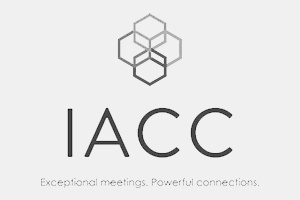Meetings are widely misunderstood. They’re often labelled time and money wasters, when in actual fact, they’re one of the most effective tools for making things happen in a business. They also offer the added benefits of resolving issues faster and boosting collaboration among colleagues.
Like any business process, there’s a knack to making meetings effective. Learn the tricks and there’ll be no more heading into the boardroom huffing and groaning!
Here are our top tips for success:
Create a clear plan of action
As they say, proper planning prevents poor performance. Give yourself plenty of time to familiarise yourself with the agenda, from which you can form your own discussion points for each topic. Ultimately, you need to know what you want to get out of the meeting before it happens – so plan ahead to stay focused on achieving that goal.
Get acquainted with attendees
Review the attendee list ahead of the meeting so you have a clear idea of who’s going to be there and what their roles entail. This will enable you to direct discussion points and will be a real confidence-booster. We all know punctuality is pivotal to successful meetings; get there a good ten minutes early to introduce yourself and meet fellow members face-to-face.

Plan your position
Squash yourself in a corner behind a couple of colleagues and you could receive the cold shoulder! Your positioning plays a big part in the boardroom; ideally, you want to look straight on at the key speaker, and at the very least within eye-contact range. If you’re directly facing the front, you’re essentially smack-bang in the middle of the meeting, bettering your chances of being central to the discussion.
Have a no phone zone
Digital devices can be incredibly distracting, so keep your smartphone on silent and stored away, together with any other tech. On the flipside, other people having their phones on the table will distract you, particularly if they keep checking them when they’re supposed to be in on the conversation. Don’t be afraid to set ground rules at the start of the meeting; you could even encourage everyone to drop their phones off at the door before entering.

Conduct yourself correctly
Just as important as what you say, is how you say it. Speak slowly to ensure your points are conveyed clearly. If things heat up and voices start to raise in pitch and volume, bring the tone back down by speaking in a calm manner. A little talking over one another is to be expected, but keep it to a minimum. Just like a normal conversation, success lies in taking it in turns to talk and listen.
Stick around and recap
Don’t just stand up and leave after the meeting’s finished (regardless of how much you need that coffee). This is particularly important if you chair the meeting; spend time summarising points, answering pressing questions, and making sure that everyone’s crystal clear on the points that they are personally responsible for actioning.

Thank you goes a long way
If someone did a top job of chairing or organising a meeting, or supporting you during the discussion, a simple “thanks” goes a long way. Send them an email, write a letter or tell them face-to-face – they’ll really appreciate it.
With the above tips in mind, you’ll be well on your way to achieving great meetings, making sure you always leave the boardroom feeling accomplished. Don't forget to download our Meeting Planner's Bible too.






